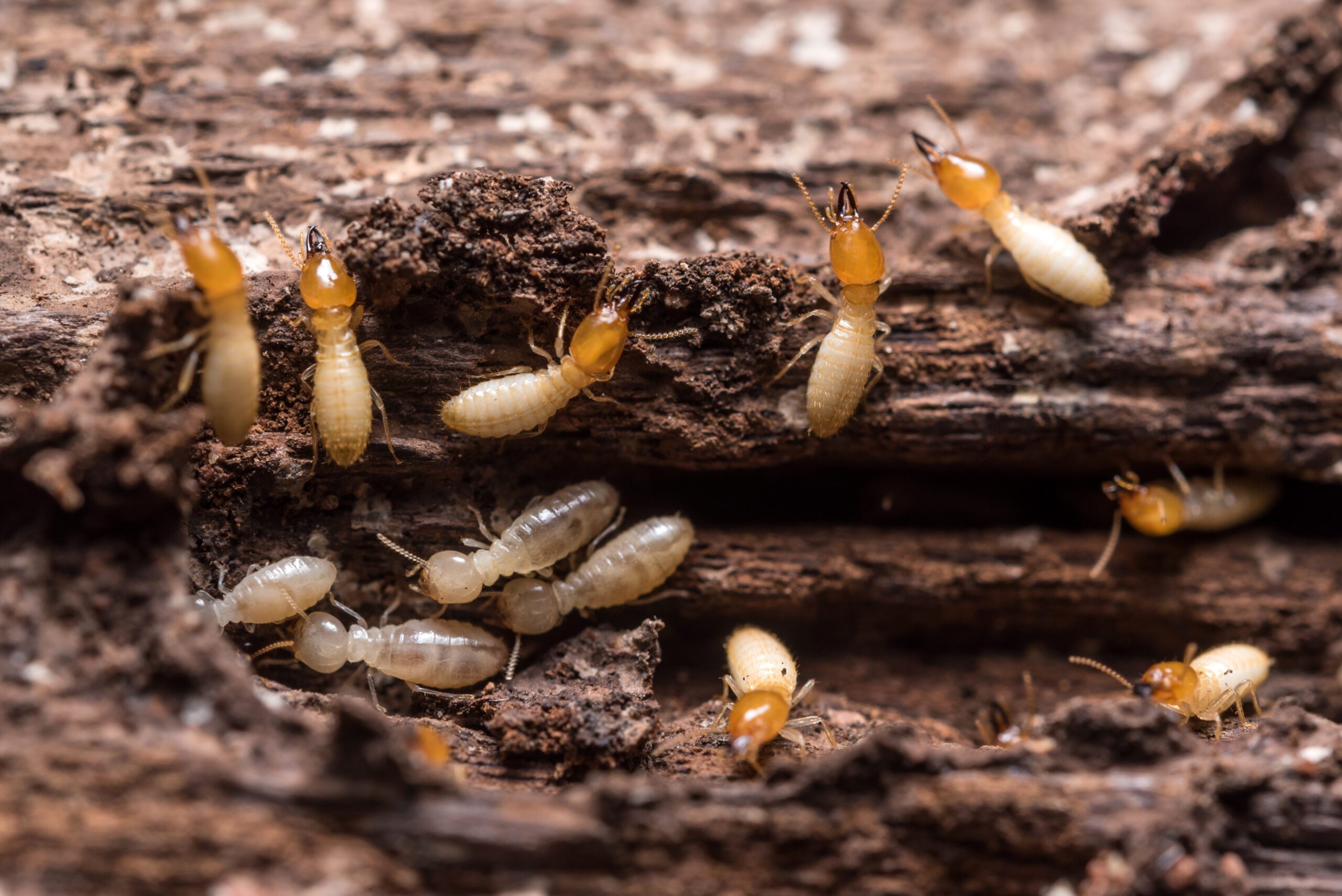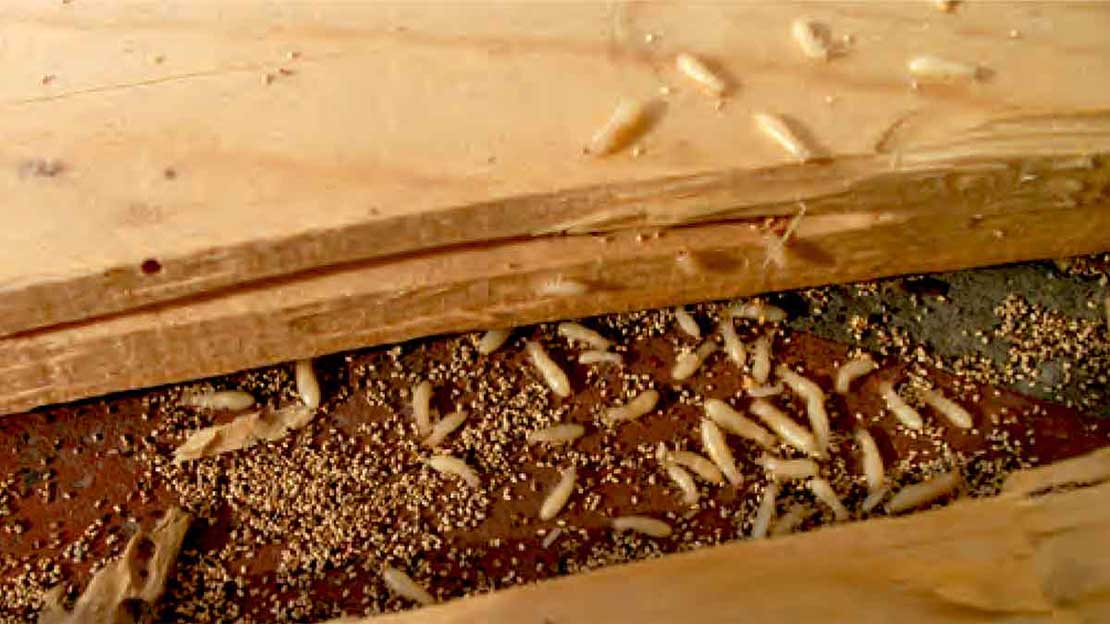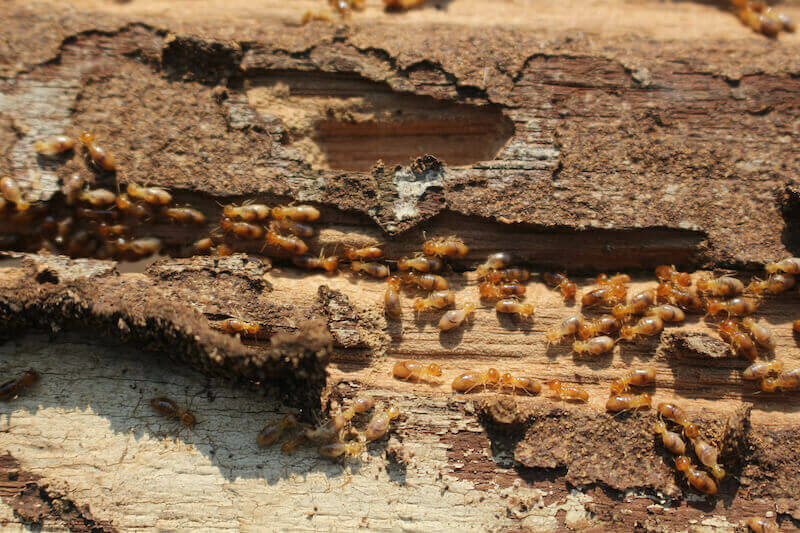Florida’s subtropical setting characterized by warm temperatures, consistent humidity, and mild winters encourages termites to stay active and feed on wood nearly all year. In Pompano Beach, a major coastal community in South Florida, these wood-eating insects can easily invade single-family homes, short-term rentals, or commercial venues if occupant or property manager oversight lapses. By the time occupants notice hollow-sounding wood, mud tubes, or discarded wings, termites might have already undermined interior support beams, floorboards, or wooden fixtures. This page explores why termites thrive in Florida, how to detect them promptly, and why using a professional termite exterminator for termite treatments is vital to preserving your property’s integrity.
Whether you operate a residence in Pompano Beach or manage rentals servicing both locals and visitors, detecting termites quickly and utilizing specialized, multi-stage solutions guards occupants from deeper structural harm, extensive repair costs, and multiple do-it-yourself attempts that frequently miss hidden colonies or ongoing egg-laying cycles behind walls or beneath floors.
Why Termites Flourish in Florida
Mild Winter Temperatures
In cooler regions, subfreezing weather kills or sends termites into dormancy for months. Florida’s gentle cold season rarely hits freezing, leaving termites able to feed and lay eggs indoors or outdoors throughout the year. Climate-controlled interiors (about 65–85°F) further eliminate seasonal downtimes, allowing all termite life stages egg, larva, soldier, worker progression unless occupant or manager interventions interrupt them.
Dampness & Warmth
Subterranean termites in particular need moist soil to construct earthen tunnels. Florida’s periodic rain, lawn irrigation, or minor indoor leaks keep conditions humid, fueling subterranean termite foraging. Drywood termites likewise exploit cracks in roof eaves or attic beams, requiring only minimal moisture indoors to flourish. The Florida climate thus meets both subterranean and drywood termite preferences under mild winter conditions.
Plentiful Wood Structures
From framing lumber and baseboards to fences and deck boards, Florida properties typically feature extensive wooden materials that termites can consume if occupant or manager detection is late. Termites attack wood from within, often leaving only thin outer layers that conceal extensive interior damage.
Fast Colony Growth
A single termite queen can produce numerous eggs daily, swiftly growing worker populations that expand to new wooden targets. Subterranean termites spread through underground networks, while drywood termites embed in rafters or furniture. Without occupant or professional checks, what appears as a mild termite presence can rapidly become a multi-floor infestation.

Telltale Signs of a Termite Infestation
- Mud Tubes
- Pencil-thin tunnels running along foundation walls or wooden beams, used by subterranean termites to maintain moisture levels.
- Often found in crawl spaces, basement edges, or on exterior surfaces leading to wooden structures.
- Pencil-thin tunnels running along foundation walls or wooden beams, used by subterranean termites to maintain moisture levels.
- Discarded Wings
- Winged termite “swarmers” shed translucent wings after emerging to form new colonies.
- Small piles near window sills, door frames, or light fixtures hint at a termite nest nearby.
- Winged termite “swarmers” shed translucent wings after emerging to form new colonies.
- Hollow-Sounding or Weakened Wood
- Termites consume wood internally, leaving a thin outer shell that resonates hollow if tapped.
- Light blistering or peeling paint can hide termite galleries underneath.
- Termites consume wood internally, leaving a thin outer shell that resonates hollow if tapped.
- Drywood Termite Frass
- Tiny, ridged pellets resembling sawdust around holes in beams or furniture.
- Indicates drywood termites pushing excrement out from active tunnels.
- Tiny, ridged pellets resembling sawdust around holes in beams or furniture.
- Swarmers
- Winged termites emerging in warm, humid weather to begin new nests.
- Spotting swarmers inside strongly suggests an established colony in or near the structure.
- Winged termites emerging in warm, humid weather to begin new nests.
- Difficult Windows/Doors
- Wood frames compromised by termite tunneling can swell or warp, making windows or doors hard to open or close properly.
- When combined with other indicators, it strongly implies concealed termite foraging.
- Wood frames compromised by termite tunneling can swell or warp, making windows or doors hard to open or close properly.
Why Overlooking Termites Is Dangerous
Structural Damage
Termites silently devour wood from within, weakening beams, floor supports, or wall studs. Left unchecked, extensive colonies can cause sagging floors, cracks in walls, or partial collapses, necessitating expensive rebuilding or occupant relocation.
Colony Spread
Subterranean termites frequently expand underground networks, invading adjacent buildings if occupant or manager vigilance remains low. Drywood termites can form multiple satellite nests across rafters or wooden furniture, quickly affecting multiple rooms.
Mounting Treatment & Repair Costs
Minor termite presence handled early might require limited spot treatments or foam injections. Delaying until termites occupy multiple floors or behind walls typically forces occupant displacement for entire-structure fumigation or repeated chemical usage, hiking occupant disturbance and total bills.
Anxiety & Uncovered Damages
Termite destruction often isn’t covered by standard homeowner’s insurance, leaving owners to shoulder steep repair expenses. Additionally, occupant concern about unseen wood damage escalates stress until thorough extermination resolves it.

Why a Professional Termite Exterminator Is Essential
Detailed Inspection & Colony Identification
A termite exterminator inspects foundations, crawl spaces, attics, or yard perimeters for mud tubes, frass, or compromised wood. Determining whether subterranean vs. drywood (or Formosan) termites are present guides whether entire-structure fumigation, soil termiticides, or localized foam injections suit occupant needs.
Colony-Wide Elimination
DIY sprays kill surface termites, sparing concealed queens or deeper nest populations behind walls. Professional termite removal combines:
- Soil Termiticides: Creating chemical barriers around foundations for subterranean termites.
- Bait Stations: Slow-acting toxins that worker termites share with the entire colony.
- Fumigation (Tenting): Used for widespread drywood termite problems.
- Localized Foam/Liquid Treatments: For smaller, confirmed infestations.
Safe, Targeted Application
Inexpert chemical use endangers occupants or the environment. Certified exterminators apply termiticides properly like trenching near foundations or sealing entire structures for fumigation ensuring lethal exposure to termites while minimizing occupant risks.
Moisture & Entry Prevention
Subterranean termites depend on moist soil, so occupant synergy fixing leaks, draining water away from foundations blocks termite expansions. Drywood termites typically infiltrate via attic vents or roof cracks; sealing eaves of roof lines keeps them from re-entering post-treatment.
Monitoring & Service Contracts
Many termite pros offer warranties or ongoing inspections, handling emergent colonies swiftly. Occupants enjoy peace of mind that new mud tubes, swarmers, or frass triggers immediate solutions before structural harm escalates.
Typical Methods for Termite Treatments
- Inspection & Species ID
- Exterminators check foundations, attics, basement corners, or yard edges for mud tubes, frass, or hollow-sounding beams.
- Deciding if subterranean vs. drywood shapes whether entire-fumigation or partial foam best addresses occupant property.
- Exterminators check foundations, attics, basement corners, or yard edges for mud tubes, frass, or hollow-sounding beams.
- Soil Termiticides
- Used for subterranean termites by trenching or drilling around foundations.
- Poisoned soil kills or repels termites crossing it, ultimately collapsing their colony.
- Used for subterranean termites by trenching or drilling around foundations.
- Bait Stations
- Placed around a structure’s perimeter, worker termites bring slow-acting poison back to the nest.
- Ideal for areas where occupant or manager detection is sporadic.
- Placed around a structure’s perimeter, worker termites bring slow-acting poison back to the nest.
- Fumigation (Tenting)
- Suited for heavier or multi-room drywood termite issues. The building is tented and filled with gas penetrating wooden layers.
- Occupants temporarily vacate, returning once the environment is ventilated and termite-free.
- Suited for heavier or multi-room drywood termite issues. The building is tented and filled with gas penetrating wooden layers.
- Localized Foam or Spot Treatments
- Targeted foam or liquid termiticides injected into smaller drywood pockets.
- Follow-up checks verify no hidden expansions or leftover nest segments remain unaddressed.
- Targeted foam or liquid termiticides injected into smaller drywood pockets.
- Moisture & Wood Condition Fixes
- Occupant synergy addressing leaks, ensuring no wood-soil contact, or removing damp, rotted boards cuts off termite-friendly conditions.
- Sealing attic cracks or vents also blocks drywood termite swarmers.
- Occupant synergy addressing leaks, ensuring no wood-soil contact, or removing damp, rotted boards cuts off termite-friendly conditions.
- Routine Checks & Warranties
- Annual occupant or professional inspections for mud tubes, frass, or winged swarmers detect fresh infestations early.
- Swift occupant or manager response halts budding colonies before extensive wood damage occurs.
- Annual occupant or professional inspections for mud tubes, frass, or winged swarmers detect fresh infestations early.
- Inspection & Species ID

Service Area: Pompano Beach
Although termites flourish across Florida under the mild winter climate, this page specifically covers termite solutions in Pompano Beach, where occupant synergy plus specialized exterminator coverage remain critical for destroying or preventing termite intrusions. Florida’s gentle cold season rarely restrains termite feeding or breeding cycles, so occupant readiness plus professional extermination ensures comprehensive termite defense.
Why Choose Us
Florida-Focused Methods
We employ recognized termite control soil termiticides, fumigation, bait stations paired with occupant synergy (like sealing cracks or moisture control), ideal for Florida’s environment. This occupant plus professional approach trumps occupant attempts that skip concealed colonies or queen-laying processes behind walls.
In-Depth Property Reviews
Before applying chemicals, technicians carefully examine foundations, attic beams, or crawl spaces for mud tubes, wood damage, or leftover wings. Subterranean vs. drywood termite identification determines whether partial foam or entire-structure fumigation best addresses occupant concerns.
Safe & Controlled Application
Professionals use insecticides responsibly like trenching near foundations for subterranean types or tenting entire structures for advanced drywood infestations protecting occupants. Local foam in wood beams precisely eliminates termites while minimizing occupant chemical contact.
Moisture & Entry Prevention
After removing colonies, occupant synergy like fixing leaks, redirecting water, or sealing eaves shuts out returning subterranean or drywood termites. Florida’s mild winter seldom curtails termite expansions, so occupant readiness is key for lasting termite avoidance.
Monitoring & Warranty Plans
Since new colonies can emerge, many termite pros offer occupant warranties or periodic inspections. Occupants are reassured that emergent mud tubes, frass, or swarmers get handled swiftly before structural damage spreads.
Next Steps
Seeing mud tubes alongside your foundation, noticing hollow-sounding wood, or finding wings near window sills? Contact us to learn more or schedule your service. Our termite treatments in Pompano Beach combine property-wide inspections, recognized termite solutions (soil termiticides, fumigation, bait stations, localized foam), occupant moisture management, plus recommended follow-up visits eradicating current colonies while deterring fresh intrusions.
Act promptly to shield occupants from termite-caused structural issues, occupant stress over unseen wood destruction, and potential out-of-pocket repair costs seldom covered by insurance. Trust our Florida-based termite exterminator skill to locate, exterminate, and block these silent feeders, preserving your property’s stability under Florida’s mild winter climate that otherwise encourages year-round termite feeding cycles.
